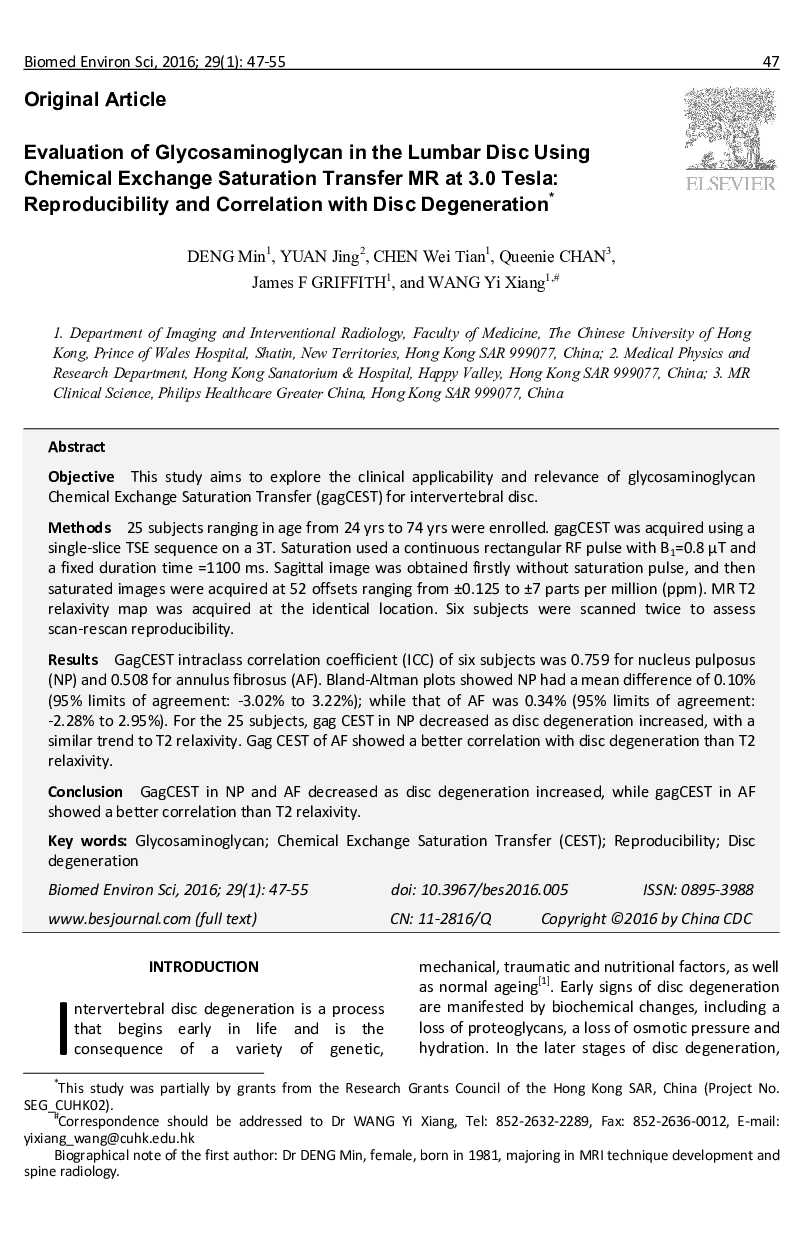| Article ID | Journal | Published Year | Pages | File Type |
|---|---|---|---|---|
| 4195694 | Biomedical and Environmental Sciences | 2016 | 9 Pages |
ObjectiveThis study aims to explore the clinical applicability and relevance of glycosaminoglycan Chemical Exchange Saturation Transfer (gagCEST) for intervertebral disc.Methods25 subjects ranging in age from 24 yrs to 74 yrs were enrolled. gagCEST was acquired using a single-slice TSE sequence on a 3T. Saturation used a continuous rectangular RF pulse with B1=0.8 μT and a fixed duration time =1100 ms. Sagittal image was obtained firstly without saturation pulse, and then saturated images were acquired at 52 offsets ranging from ±0.125 to ±7 parts per million (ppm). MR T2 relaxivity map was acquired at the identical location. Six subjects were scanned twice to assess scan-rescan reproducibility.ResultsGagCEST intraclass correlation coefficient (ICC) of six subjects was 0.759 for nucleus pulposus (NP) and 0.508 for annulus fibrosus (AF). Bland-Altman plots showed NP had a mean difference of 0.10% (95% limits of agreement: −3.02% to 3.22%); while that of AF was 0.34% (95% limits of agreement: −2.28% to 2.95%). For the 25 subjects, gag CEST in NP decreased as disc degeneration increased, with a similar trend to T2 relaxivity. Gag CEST of AF showed a better correlation with disc degeneration than T2 relaxivity.ConclusionGagCEST in NP and AF decreased as disc degeneration increased, while gagCEST in AF showed a better correlation than T2 relaxivity.
